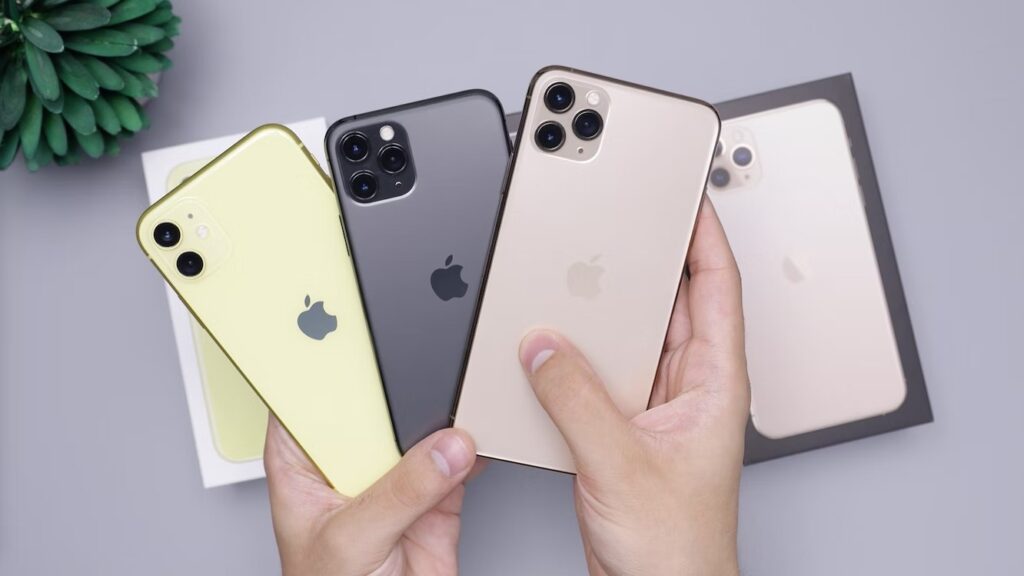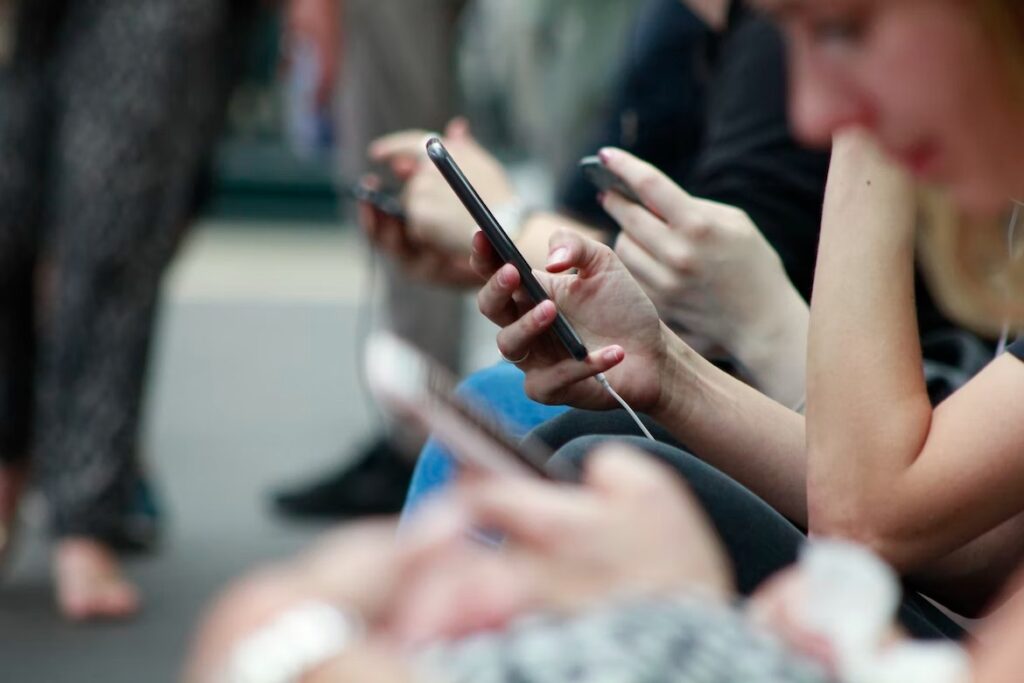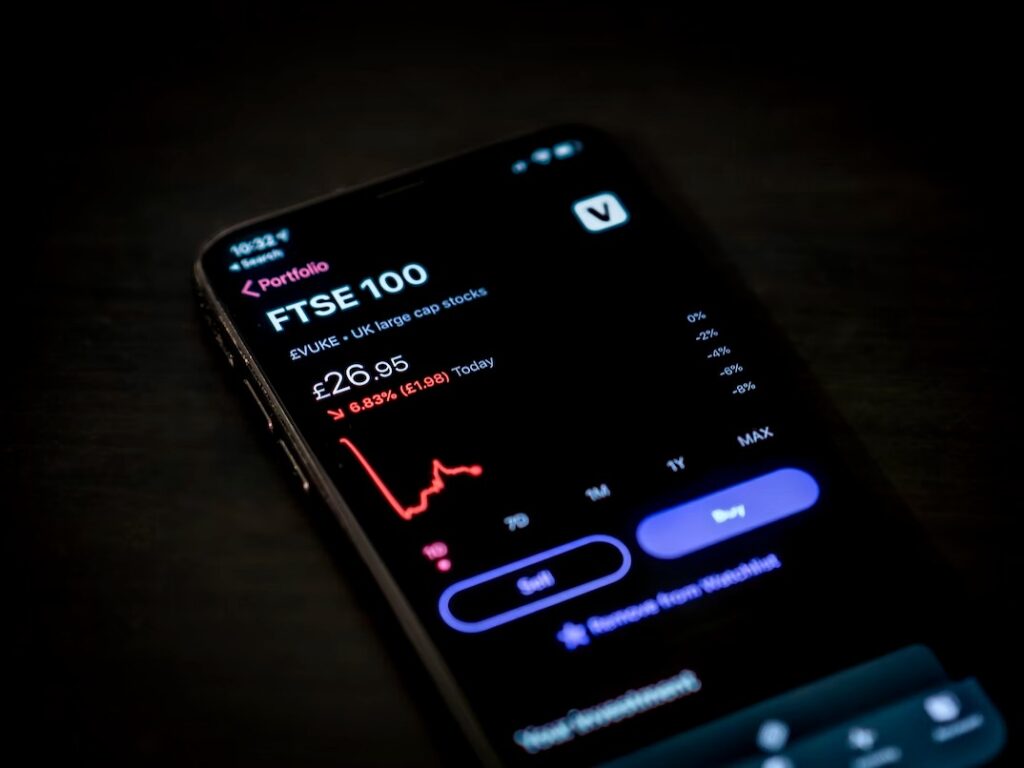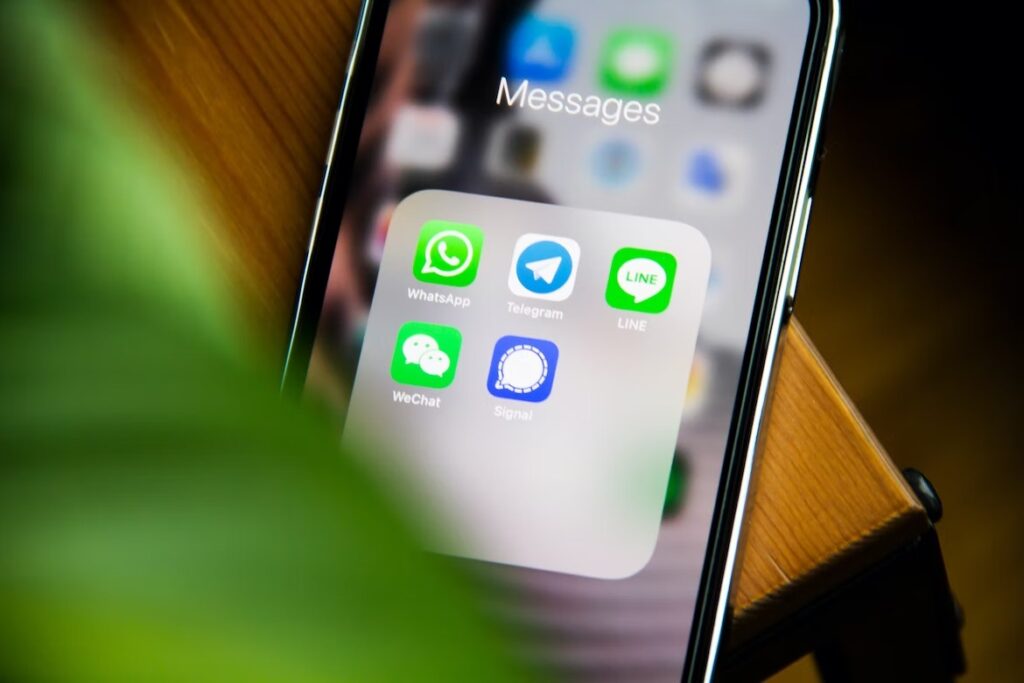Society has become accustomed to mobile devices, but you’d still be surprised at how many people have smartphones.
The numbers are staggering, and they’re only becoming increasingly common across the United States and the rest of the world.
In 2023 alone, it’s expected that there will be roughly 6.9 billion smartphone users.
This goes to show how much of the human population actually use them in their daily lives.
It’s important to mention that there are many other stats involved here and a variety of factors that play into the relevance of smartphone users.
This article will dive into the most current statistics on smartphone devices and how they correlate to various demographics.
Post Contents
How Many People Have Smartphones in 2024?
Key Statistics
- 2023 estimates report nearly 7 billion smartphone users
- Over 80% of smartphone users are between the ages of 18 and 35
- Nearly 100% of Gen Z own a smartphone
- 2023 shows a 4.2% annual increase in smartphone usage
- Statistics project over 7 billion smartphone users by 2024
Smartphones Statistics by the Numbers

As they continue to integrate further into our everyday lives, smartphones have become a necessity in more ways than one.
They can do much more than just make calls or send texts, as they’re essentially a small computer in your pocket.
Smartphones are also more accessible than ever and have garnered increasing worldwide interest year after year.
It isn’t shocking to find most people with a phone in their hand, but there are quite a few statistics that lead to the reality we live in today.
1. Smartphone Users Worldwide
Stats show a staggering increase in smartphone users all over the world with each passing year.
Just seven years ago, in 2016, there were 3.7 billion smartphone users worldwide, and this number is expected to reach over 7 billion in 2024.
When you think about it, that’s a rapid increase.
Eventually, a majority of the planet will have access to at least one smartphone.
It’s projected that the number of smartphone users will start to reach close to 8 billion around 2027.
Smartphones come with many different uses, but this will guarantee the world is more connected than ever before.
2. Annual Growth
To get a different perspective on the growth of smartphone users, you can take a look at how the percentages change with each passing year.
Data shows that since 2016, smartphone adoption has increased by nearly 10% every single year.
However, between 2016 and 2023, it seems that 2017 brought many new users into the market.
The number of users globally grew by 20.9% in 2017, making it one of the largest years for smartphone adoption.
It’s evident that the popularity of smartphones knows no bounds and continues to reach people in every corner of the globe.
3. Popularity of Smartphones

Not only are smartphones extremely popular among billions of people, but they’re easily the most popular electronic devices of all time.
To give you some perspective, around 95.8% of all internet users prefer smartphones over any other electronic device.
This isn’t to say that computers are losing their relevance, but the convenience smartphones provide is unbeatable.
There are many different ways to customize a smartphone experience, but many people find their features to be essential tools nowadays.
From another perspective, it’s expected that around 9 in 10 people will be smartphone users by 2024.
At this point, smartphones market themselves in many ways, as everyone feels the need to have one.
It only makes sense as you can manage many different aspects of your life with just a few taps.
4. The Effects on Different Age Groups
One might think that young people are the majority of smartphone users, and they’d be right.
However, adoption across many different age groups is becoming much more common.
There was a time when smartphone technology was entirely foreign to certain age groups. Now, people young and old, are all a part of the equation.
You can expect nearly any young person to own a smartphone, but surprisingly, around 50% of people 55 and older are projected to have a smartphone throughout 2023.
Many children are also quite accustomed to smartphones from a young age.
In the U.S. alone, it was reported in 2016 that 18.5 million smartphone users were between the ages of 12 and 17.
Some may argue that 12 is too young, but as a form of reliable communication, smartphones play a major role in the safety of many children.
The Prevalence of Smartphones in Different Economies

Smartphones are finding their way into what seems like every country on Earth, but the number of users isn’t exactly proportionate across the board.
It’s known that advanced economies generally hold a majority of smartphone users.
Many of these users are found in places like the U.S., Europe, and China.
You can take a look at the penetration rate of smartphones in different economies to get a better scope of smartphone usage.
In the U.S., around 82.2% of the country’s population uses a smartphone.
You can only imagine that the numbers aren’t too far off in the United Kingdom. Nearly 80% of their population uses smartphones as well.
Other relevant players with this technology are Germany and France, and roughly 79% of their populations actively use smartphones.
These are numbers coming from budding economies, but percentages tend to look much different when it comes to emerging economies.
How Do Emerging Economies Differ?
When you consider the different progression between developing nations, it’s understandable that the percentage of smartphone users will vary.
There are a few good examples of this in various parts of the world.
In Brazil, only 55.4% of its citizens are smartphone users, and you’ll find this number goes even lower in other emerging economies.
In India, it’s 35.4%, and in places like Nigeria, the percentage of users is roughly 20% of the population.
Two contributing factors to these numbers are accessibility to technology and poverty.
Both of which are common issues in different emerging economies.
Nevertheless, these numbers are slowly increasing over the years.
As smartphone technology continues to become more affordable and accessible, you’ll find that these percentages will continue to rise.
To users in many developed countries, smartphones are simply a part of everyday life, and most people have one on them at all times.
Although smartphone technology is spoken about in a universal context, there are many different brands and types of smartphone technology on the market.
When you look at different countries, it isn’t uncommon to find that some brands are more popular than others.
Undoubtedly, the Apple iPhone has a grip on many people worldwide; there are many other relevant brands.
Smartphone Global Market Share

Many people immediately think of Apple when it comes to smartphones, but there are quite a few players that aren’t far behind.
In our current year, Apple currently holds a little over 27% of the global market share on smartphones.
iPhones are pretty popular in many different countries, but it isn’t uncommon for some people to prefer a brand of smartphone other than Apple.
Right behind Apple comes Samsung, with a market share of around 27%.
These two companies are always close when it comes to new phones and related technology.
There are many more brands than just these two, but together, both Apple and Samsung cover nearly 55% of the entire smartphone industry.
Both brands have been leaders in their own right for a decade now, but that hasn’t stopped other brands from making a name for themselves.
This leads me to the next most popular brand, which is Xiaomi.
A Chinese company that offers a unique twist on the smartphone experience, they hold around 12.5% of the global market share.
This company’s relevance and overall growth have continued to pick up pace since 2017.
Other relevant brands include Oppo, Vivo, and Huawei.
They hold much smaller percentages of the market share, but every brand combined makes up roughly 83.5% of smartphone users.
Another interesting note is that Apple is the only brand on this list that’s based out of the United States.
The other brands mentioned all come from either China or South Korea.
Another important statistic for this topic is the type of smartphone usage.
People use their smartphones for all kinds of reasons, but the most popular tend to play a part in future developments of smartphone technology.
Usage Statistics
As smartphones continue to become more integrated into every facet of our lives, you can expect overall usage to increase.
However, many people focus on a few key features that a smartphone has to offer.
It’s also interesting to see how certain demographic chooses to use their smartphones compared to others.
Overall, there are a few usage statistics that stand out from the crowd and show a consistent pattern between many different types of users.
1. Time Spent on Smartphones

If you were to track the amount of time you spend on your smartphone, you’d probably be a little surprised.
Based on stats from 2019, the average user in the United States spends nearly four hours per day on their smartphone.
This stat also showed that users are spending more time on smartphones than they are on watching TV.
What’s equally surprising is that the amount of time spent on smartphones seems to be increasing each year.
This is for a number of reasons, as many people use the technology for entertainment, business, and many aspects of their personal lives.
2. Shopping Online
Many of us remember the days when online shopping first emerged with desktop and laptop computers.
Nowadays, many people prefer to shop online with their smartphones through the web as well as many different applications.
On a global scale, nearly 51% of users choose to shop online using their smartphone.
You can thank various applications for a lot of that, and these same shoppers are doing this at least once per week.
What’s interesting is that middle-aged women and men make up most of this particular demographic of online shoppers.
These preferences are easily becoming more common with each passing year.
With the evolving convenience of smartphones and the endless number of applications available, online shopping has never been easier.
3. Mobile Web Traffic

Smartphones make up a large percentage of internet traffic worldwide.
Stats show that in 2021, around 55% of global web traffic entirely comes from mobile devices.
This is a stark increase from stats in 2015, as that number was only a little over 31% at the time.
Once again, you can definitely expect this number to grow as more people adopt smartphone technology.
This is also due to the many conveniences that come with the devices.
From another angle, smartphones are more affordable than computers, depending on the brand.
Smartphone technology has been taking the world by storm for years now.
Many people can gather information, shop online, and manage aspects of their lives with just a few taps.
Stats also tell us that people are using more and more smartphone data on a daily basis.
In 2020, the average smartphone data usage was around 10GB per user, and this is going to increase quite a bit over the years.
More specifically, experts believe this number will increase to 35GB per user by 2026.
Overall, there’s no stopping the influence that smartphones have on the world, regardless of the various pros and cons they have on our lives.
Final Notes
Smartphones will always come with quite a bit of controversy, as many people find them to be quite addicting.
However, they’re far too engrained in our daily lives to simply disappear. Many people run their entire lives through their smartphones.
Nevertheless, the technology has made life easier in many ways and has made a variety of everyday tasks much more efficient.
This article focused on how many people have smartphones and how their popularity has grown over the years.






























